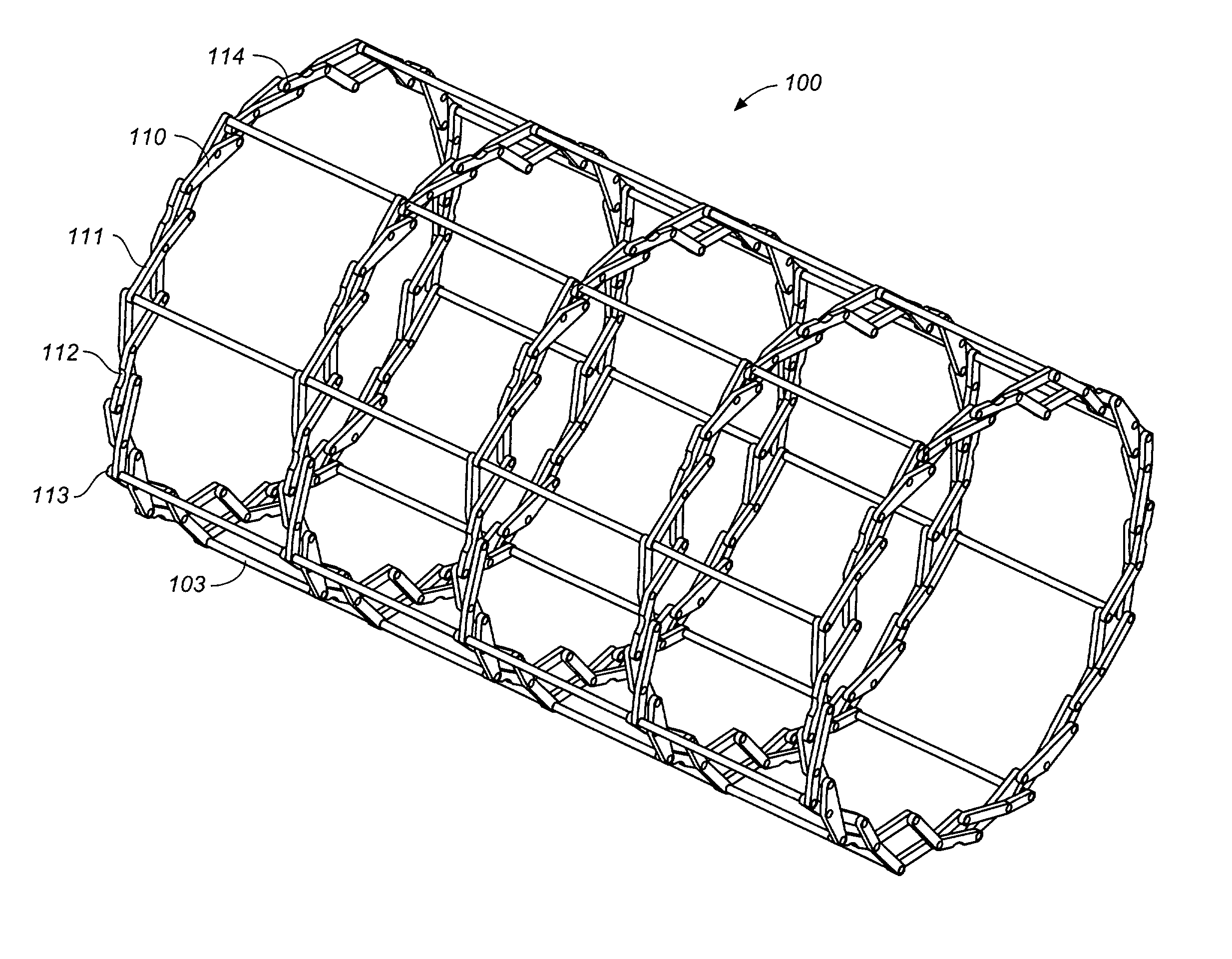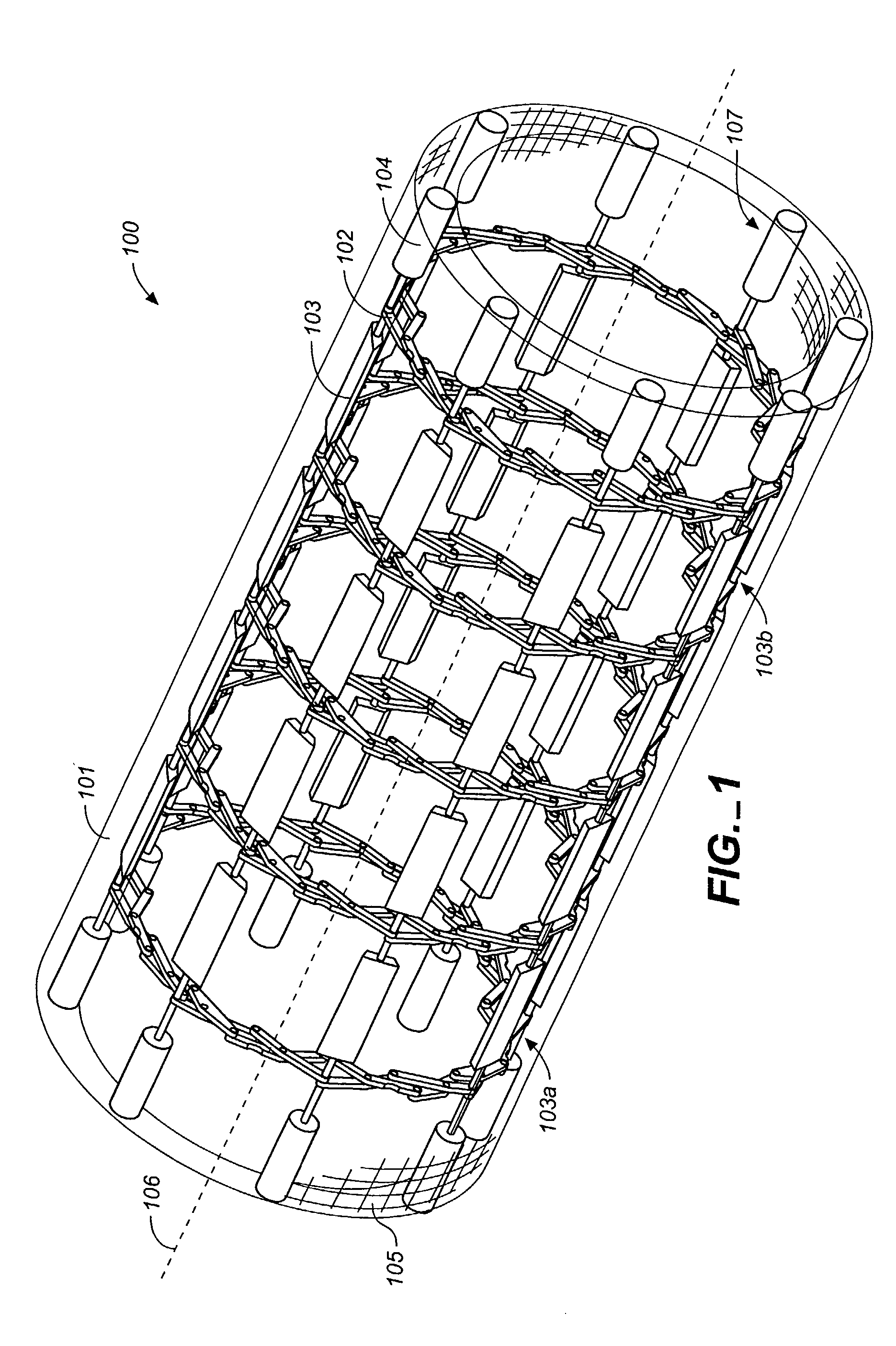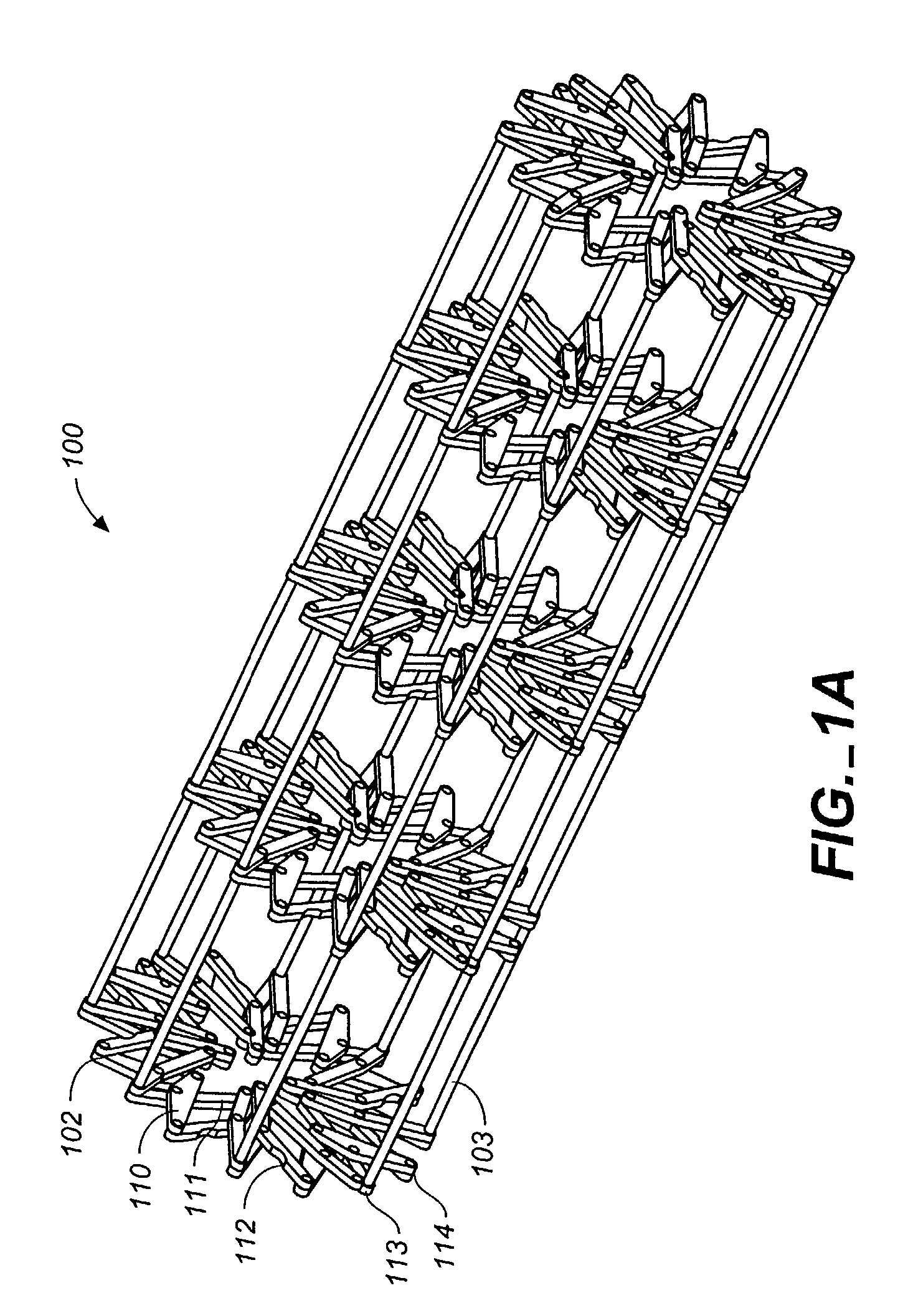Flexible MEMS actuated controlled expansion stent
a microelectromechanical system and flexible technology, applied in the field of medical devices, can solve the problems of reduced blood flow, complex mechanism of balloon angioplasty, and inability to improve the coronary circulation, so as to minimize vascular tissue damage and restnosis, reduce vascular injury, and eliminate potential long-term complications
- Summary
- Abstract
- Description
- Claims
- Application Information
AI Technical Summary
Benefits of technology
Problems solved by technology
Method used
Image
Examples
Embodiment Construction
[0056]Referring to FIGS. 1 through 12, wherein like reference numerals refer to like components in the various views, FIG. 1 is a perspective view of the flexible MEM actuated controlled expansion stent of the present invention. The stent generally comprises a tubular body embodying structure that allows controlled radial expansion when the stent is deployed into vasculature. Specifically, the medical device includes physical and operational structure that enables it to be radially expanded in a controlled manner by the use of MEMS technology, providing optimal control of the expansion rate (gradual or step-wise) of the medical device and utilizing pressure or force sensors to evaluate the pressures / forces exerted on the vascular wall by the expansion, thus reducing injury to vascular tissue that lead to restenosis.
[0057]In its first preferred embodiment, the medical device of the present invention comprises a stent 100 having a stent body 101. The stent body is generally tubular in...
PUM
 Login to View More
Login to View More Abstract
Description
Claims
Application Information
 Login to View More
Login to View More - R&D
- Intellectual Property
- Life Sciences
- Materials
- Tech Scout
- Unparalleled Data Quality
- Higher Quality Content
- 60% Fewer Hallucinations
Browse by: Latest US Patents, China's latest patents, Technical Efficacy Thesaurus, Application Domain, Technology Topic, Popular Technical Reports.
© 2025 PatSnap. All rights reserved.Legal|Privacy policy|Modern Slavery Act Transparency Statement|Sitemap|About US| Contact US: help@patsnap.com



